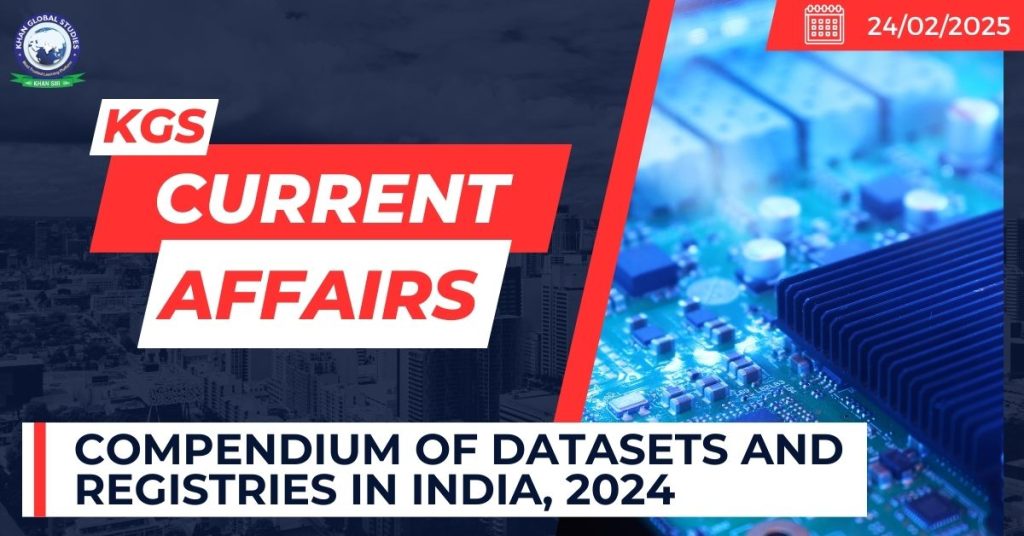Context:
Recently, the National Statistical Office under the Ministry of Statistics and Programme Implementation (MoSPI) published the Compendium of Datasets and Registries in India, 2024.
More on the News
- The compendium is aimed at strengthening data accessibility and informed decision-making.
- The compendium’s consolidates metadata forapproximately 257 datasets and registries which had been sourced from 40 Ministries and Departments of the Government of India.
- a significant increase from the 70 featured in the beta version from
- The compendium serves as a one-stop reference and enables to explore the availability, scope, and accessibility of government datasets effortlessly.
Key features of the Compendium:
- Standardized metadata, detailing data collection methodologies, periodicity of updates, and data-sharing policies across ministries.
- Legal and regulatory framework: It helps in governing the collection and dissemination of each dataset while offering insights into the level of disaggregation to support deeper analysis.
- Direct access to data sources: It enables users to benefit through links to the respective Ministry/Department portals, ensuring seamless accessibility.
Significance of the compendium
- It modernized and streamlined the National Statistical System.
- It advances in data-driven governance, fostering research, and promoting evidence-based policymaking.
National Statistical Office (NSO)
- The National Statistical Office (NSO) was formed in 2019 through the merger of the National Sample Survey Office (NSSO) with the Central Statistics Office (CSO).
- The NSO is headed by the secretary of the Ministry of Statistics and Programme Implementation (MOSPI).
- NSO prepares national accounts as well as publishes annual estimates of national product, government and private consumption expenditure, capital formation, savings, estimates of capital stock, and consumption of fixed capital etc.
- The Ministry of Statistics and Programme Implementation was formed in 1999 after the merger of the Department of Statistics and the Department of Programme Implementation.

